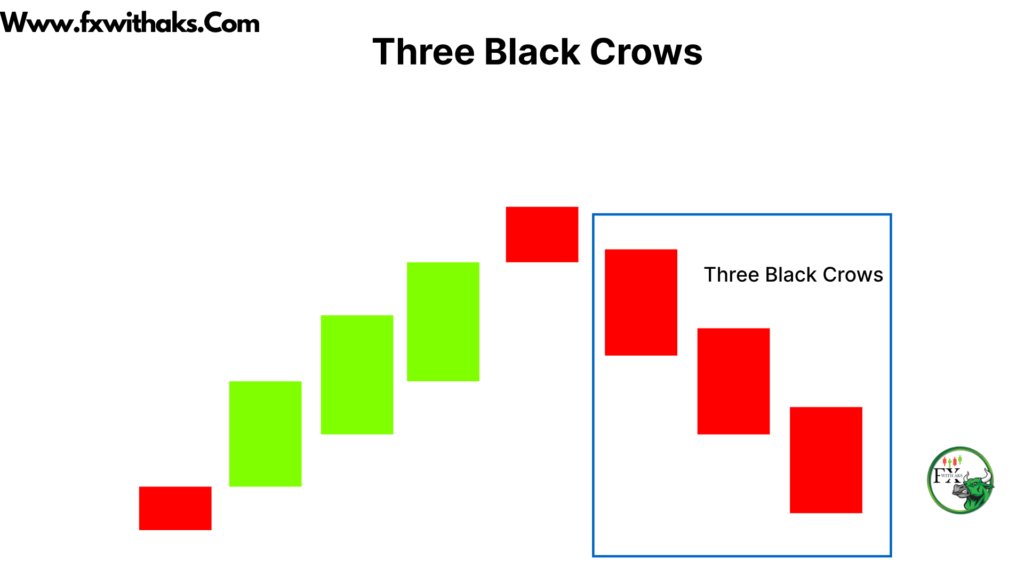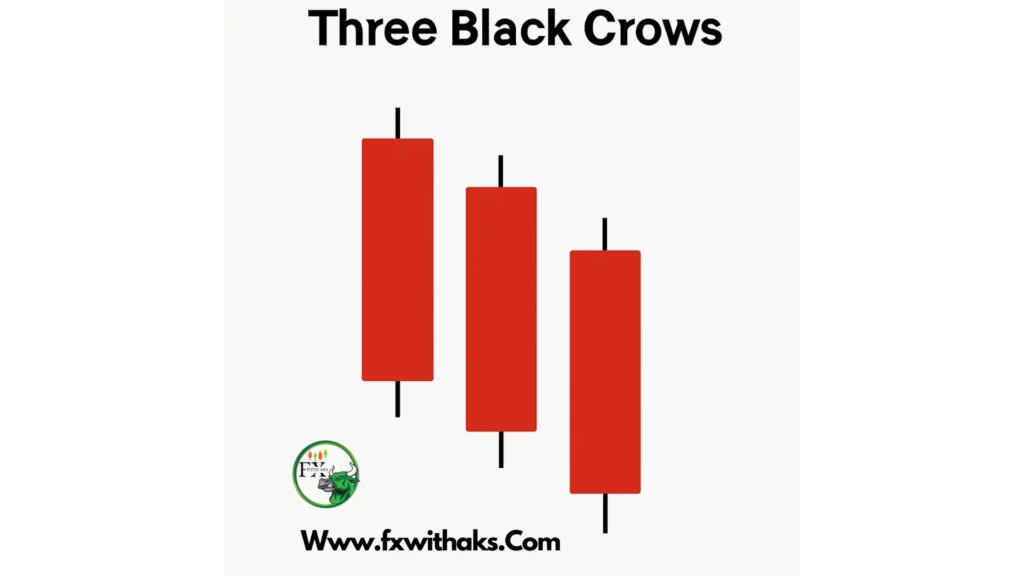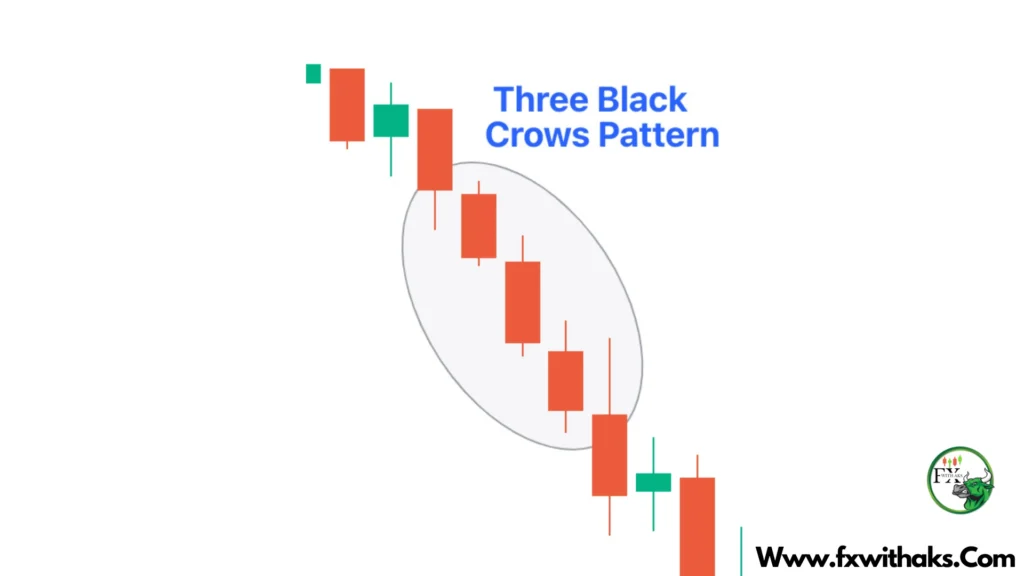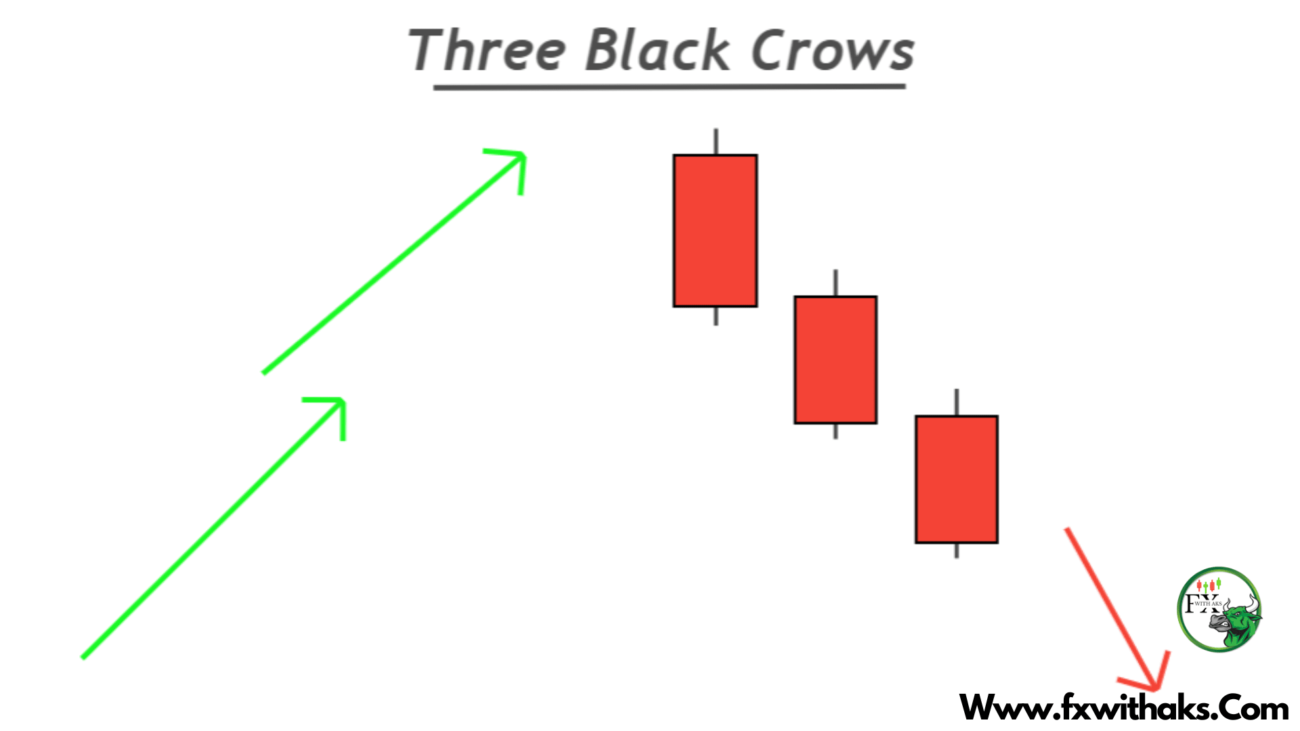The Three Black Crows is a strong bearish reversal candlestick pattern that signals a potential end of an uptrend and the start of a downtrend.

🪶 What is the Three Black Crows Pattern?
🔍 Pattern Characteristics:
- Appears after an uptrend or at the top of a bullish move
- Consists of three consecutive bearish candles
- Each candle:
- Has a long real body
- Opens within the body of the previous candle
- Closes lower than the previous candle
- Has little to no lower wick (showing strong selling pressure)

📉 What It Means
- Momentum has shifted from bulls to bears
- Selling pressure is consistent over 3 sessions
- Signals strong potential reversal to the downside

🛠️ How to Trade the Three Black Crows
1. Identify the Pattern
- Must appear after a clear uptrend
- The three bearish candles should be relatively similar in size
- Smaller or no lower shadows = stronger signal
2. Confirm the Signal
Before jumping in, confirm with: ✅ High volume on the pattern
✅ Overbought conditions on RSI or Stochastic
✅ Pattern forming near resistance
✅ Bearish crossover on MACD
3. Entry Point
📌 Aggressive Entry:
Go short at the close of the third candle
📌 Conservative Entry:
Wait for a break below the low of the third candle, or a bearish follow-through candle
4. Stop Loss Placement
🛑 Set your stop loss:
- Just above the high of the first candle in the pattern
- Or above the most recent resistance level
5. Take-Profit Targets
🎯 Aim for:
- Recent support levels
- Measured moves or swing lows
- Favor a risk-reward ratio of at least 1:2
🧠 Pro Tips:
- Most effective on higher timeframes (1H, 4H, Daily)
- Stronger when part of a confluence zone (resistance, fib level, etc.)
- Combine with trendlines, moving averages, or oscillators for added confirmation
Want a chart visual or trading example of the Three Black Crows in action?

